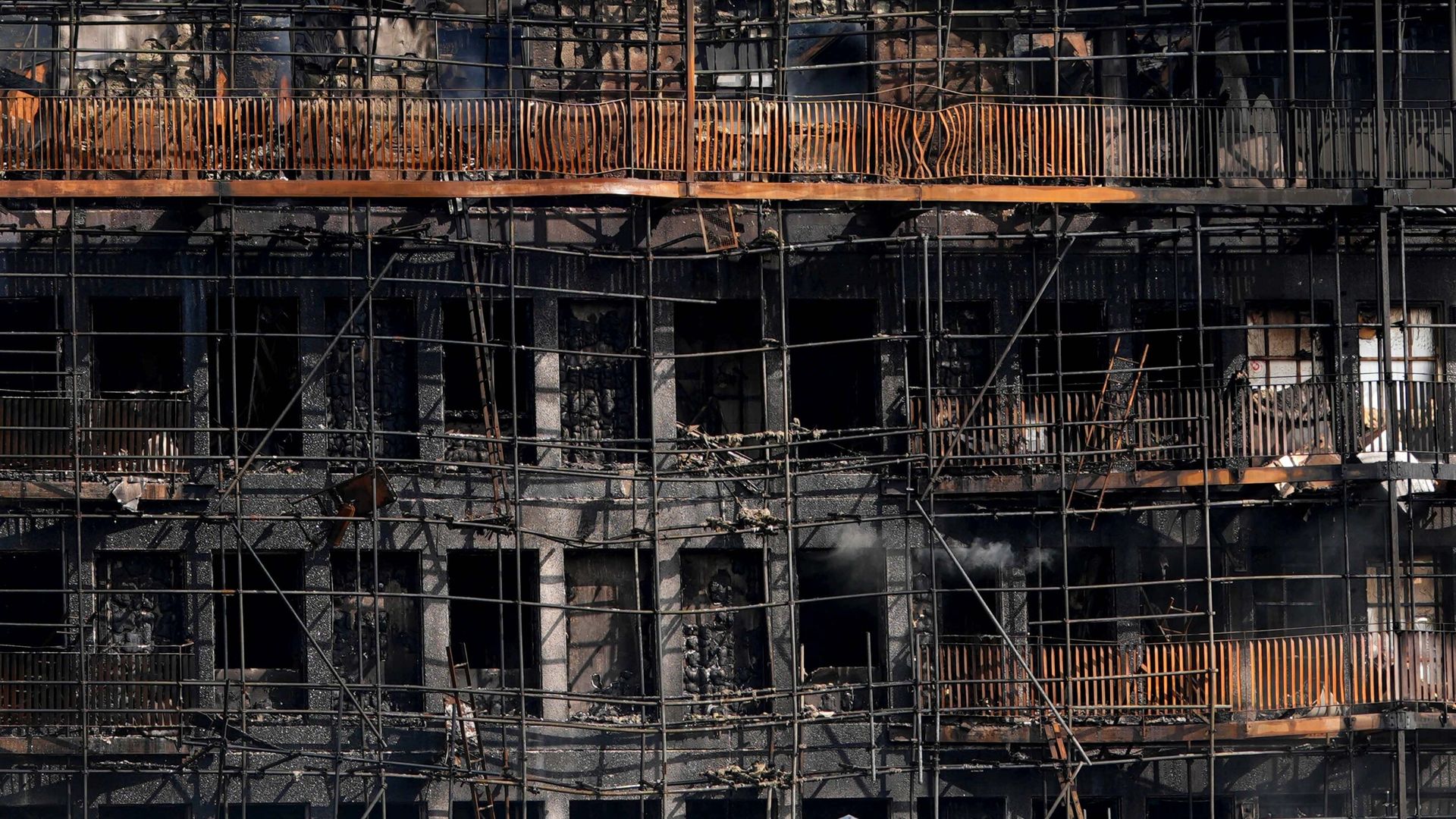Since the Grenfell Tower fire seven years ago, cladding has become the building industry’s worst nightmare.
A rush to provide low-cost, lightweight and energy-efficient wrapping for modern buildings meant flammable plastic panels were applied to flats, hospitals, student accommodation and office blocks across the country.
An investigation by Sky News spearheaded changes in building regulations and sent shockwaves through a testing and self-certification regime now labelled not fit for purpose.
Thousands of buildings with unsafe cladding
The deaths of 72 people on 14 June 2017 prompted a huge remediation programme across the country, focusing on the specific type of panels used on the west London block – aluminium composite material (ACM) – and priority given to high-rise buildings, defined as those over 18m (59ft) in height.
The latest statistics, published last week, showed that, as at the end of July, 4,630 buildings had been found to have unsafe cladding and 2,299 (50%) had started or completed remediation works.
Meanwhile, the number of buildings newly-identified with unsafe cladding has risen almost every month.
Please use Chrome browser for a more accessible video player
Monday’s fire at a building in Dagenham has echoes of the warnings tragically missed in the Grenfell Tower disaster, which the public were led to believe could now never be repeated.
In just over a week’s time, phase two of the Grenfell Tower Inquiry report will be published “to establish the facts of what happened at Grenfell Tower in order to take the necessary action to prevent a similar tragedy from happening again”.
The Spectrum Building did not have the same cladding as Grenfell Tower. Instead of ACM cladding, it had HPL, or high-pressure laminate – typically sheets of wood or paper joined together by a resin.
HPL panels were used on windows in Lakanal House, a building in south London where six people died in a fire in July 2009.
Replacement of this type of cladding was not funded by the government until April 2020, despite the Journal of Hazardous Materials publishing the results of a fire test led by Professor Richard Hull at the University of Central Lancashire in January 2019.
HPL cladding burns ‘115 times hotter’
This study found burning HPL cladding released heat 25 times faster and burned 115 times hotter than non-combustible products.
In February 2022, Spectrum’s residents’ association submitted a written statement to the Building Safety: Remediation and Funding session of the House of Commons’ Levelling Up, Housing and Communities Committee, asking for help.
The Dagenham building had 60 flats and two commercial properties covered in combustible materials, but residents said “it will take at least two more years until the building is remedied and signed off as safe”.
It warned “the stress on leaseholders living in unsafe, unsellable flats with increasing service charges for well over three years is considerable”.
More than a year after the residents’ plea, London Fire Brigade issued an enforcement notice to Spectrum’s management company for five breaches of fire safety legislation, ordering it to be rectified by 24 July 2023.
None of these breaches mentioned cladding by name, but focused on escape routes, risk management and safety equipment. The management company, Block Management UK, did not respond to a request for comment.
In April 2023, GAA Design, an architectural design business put together a proposal for remedial works to Spectrum.
Top two floors need HPL cladding replaced
Citing the latest building safety legislation, it revealed that not only did the fifth and sixth floors – the top two floors – need to have the HPL cladding replaced, but also every single panel surrounding every window on the building (known as ‘spandrels’) was unsafe.
And it said each flat with a balcony contained a privacy screen that did not meet regulations. It is unclear who instructed this firm to propose these works.
Be the first to get Breaking News
Install the Sky News app for free
Alongside detailed drawings, the full planning application was made to the London Borough of Barking and Dagenham in May 2023.
The estimated cost was “up to £2m”, and the work, expected to start in June 2023, would be finished by December of that year.
By June, planning permission was granted and a contractor, Fleetwood Architectural Aluminium had agreed to install new, highly fire-resistant cladding panels made by a Bridgewater-based manufacturer Valcan.
Yet less than a week ago, in a now-deleted post on Facebook, Valcan said representatives had “popped over to Dagenham” to see the progress of remedial works.
Keep up with all the latest news from the UK and around the world by following Sky News
They found 700sq m (7,535sq ft) of its products had been installed so far, but the project was still not complete.
The London Borough of Barking and Dagenham and Valcan have been contacted for comment.
More than seven years after the fatal Grenfell Tower fire in west London, it cannot be clearly explained why a building less than 20 miles away was still covered in unsafe materials.




